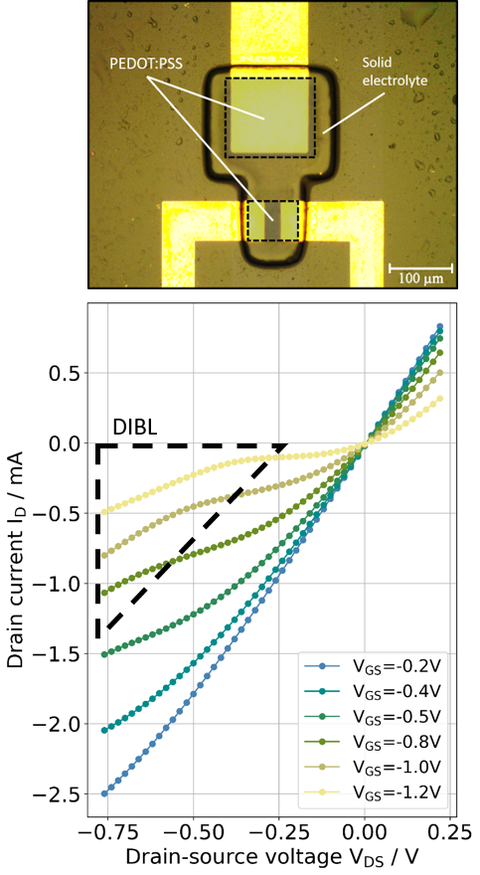Investigation of a short channel effect and study of new semiconducting materials
Organic electronics and in particular organic thin-film transistors have attracted large interest in industry concerning applications in flexible, light-weight and low cost electronics. A recent trend is the use of organic electronics in neuromorphic engineering. Organic electrochemical transistors (OECTs) are exploiting the ability of ions to electrochemically dope or dedope the transistor channel. This allows to mimic a variety essential synaptic functions [1]. Hence, OECTs have huge potential for brain-inspired computing.
To follow our vision of brain-inspired computing using the synaptic properties of OECTs, we developed a photo-patternable solid electrolyte [2]. With such, we are able to integrate our OECTs into circuits. For example, we are building a spiking neuron circuit, which, just like our brain, processes data through short voltage pulses. For this, we always look to improve our OECT devices and understand the physics behind. Currently, there are two interesting research topics available.
-
Investigation of a short channel effect, namely the drain-induced barrier lowering, that we see in our devices even at channel sizes of several micrometers.
-
Study of new semiconducting materials that we get from our Chemistry collaborators in Bayreuth.
The IAPP is a place where more than 120 physicists, chemists and engineering are working together on virtually all topics related to organic electronics – fundamentals and applications. Hence, the IAPP provides a perfect platform for the application to interact with other scientists in order to get a broad overview on other research topics on organic electronics.
You are welcome as an active part of our research team and therefore we expect you to join research group meetings and discussions about the topic. We are looking for students who are interested in bioelectronics and device physics and who are keen to gain lab experience and produce scientific work.
References:
[1] P. Gkoupidenis, et al., Advanced Materials, 2015, 27(44): 7176-7180.
[2] A. Weissbach, et al., J. Mater. Chem. C, 2021, DOI: 10-1039/dltc04230k.

